It is easy to feel nostalgic for the array of creative and political figures who made their mark on the East Village street, but its golden age is always ‘now’
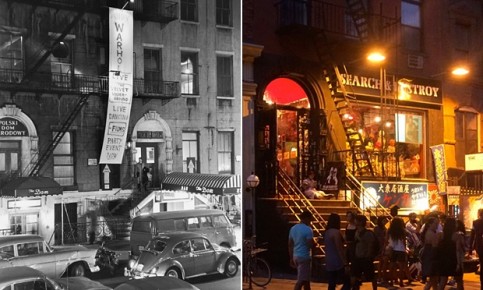
Many thoroughfares could credibly lay claim to the title “America’s hippest street”: Alberta Street in Portland, South Congress Avenue in Austin, Valencia Street in San Francisco would all have their backers.
As for New York, the bright lights of Fifth Avenue and 42nd Street were immortalised in the names of nightclubs 3,000 miles away in the Manchester of my youth. Similarly, 110th Street in Harlem, Bleecker Street in Greenwich Village and Ludlow Street on the Lower East Side have all been celebrated in songs. Bedford Avenue in hipster hotspot Williamsburg – where I found myself one table away from Dominic West, Damian Lewis and John Slattery from Mad Men recently – could make a strong case for the crown today.
Journalist Ada Calhoun has an unequivocal answer, however: the coolest street in the country is St Marks Place in New York’s East Village, the street where she grew up andwhose history she lovingly recounts in her new book St Marks is Dead: The Many Lives of America’s Hippest Street.
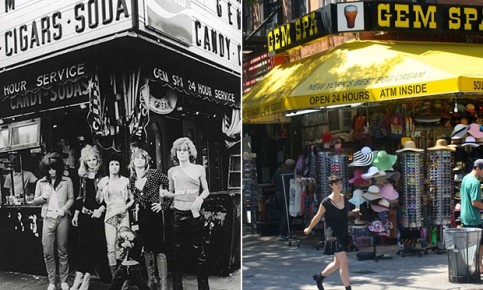
Since 1651, when Peter Stuyvesant bought the land around it from the Dutch West India Company, this three-block stretch of Manhattan seems to have been home to the largest number of cultural and historical luminaries per square inch than any other place on earth.
Leon Trotsky and WH Auden lived here, as did James Fenimore Cooper, author of Last of the Mohicans. Andy Warhol ran a nightclub on the street. The New York Dolls and Led Zeppelin shot album covers depicting one of its street-corner bodegas and its geometricallypleasing zigzag fire escapes. The Rolling Stones andBilly Joel filmed music videos here. Debbie Harry lived at No 113; William S Burroughs at No 2. Adam Horowitz of the Beastie Boys wrote the song Paul Revere sitting on the steps of Sounds records at No 20. Jeff Buckley recorded his acclaimed debut EP Live at Sin-é at No 122.
Anarchist activist Emma Goldman founded the Modern School here in 1911; one of the students was Man Ray, and novelists Jack London and Upton Sinclair were among the teachers. Billie Holiday, Thelonious Monk, Ornette Coleman, Charles Mingus, John Coltrane and Miles Davis all played at the Five Spot jazz club on the corner with Third Avenue.
The 1995 movie Kids was set here, and included locals such as Rosario Dawson and skateboarder Harold Hunter in the cast. “When Frank O’Hara ran into Leonard Bernstein, Lauren Bacall, and Jason Robards at a bar on St. Marks Place …” begins a typical anecdote in Calhoun’s book, a fascinating sweep through the cultural history of an area that has been at the heart of waves of immigration – Jewish, German, Italian, Polish, Ukrainian – and of cultural movements such as beat poetry and punk, as well as the political ones that gave it the enduring nickname “St Marx”.
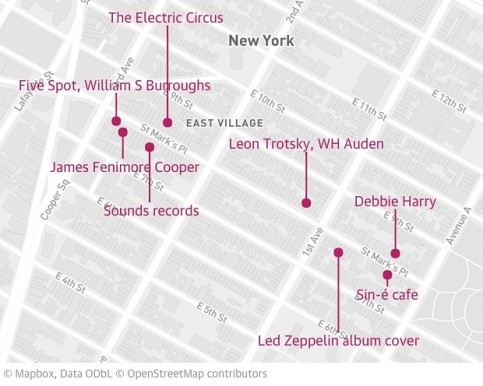
But the book is at its most interesting as a spirited riposte to the oft-stated idea that you should have seen New York in the old days.
Every generation, Calhoun contends, looks back nostalgically at the past – and future generations will do the same with the 21st-century St Marks Place, the place where episodes of Girls and Broad City were filmed, where plays were performed at Theater 80 St Marks and jazz groups played at Jules Bistro, and which erupted into a huge street party the night Barack Obama was elected in 2008. Aged millennials in future decades will reminisce fondly about entering the supposedly secret bar Please Don’t Tell through a phone booth in a hot dog restaurant – just as those who lived through the Prohibition era recalled entering Scheib’s Place by asking at a nearby butcher’s shop and being led in through an alley.
Calhoun’s interviewees demonstrate that people have always written the street off as “dead” and pined nostalgically for a previous era. “In 1953,” one tells her, “everyone said, ‘You should have been here during the thirties! It was so great. It’s terrible now.’”
“When people are saying that St Marks Place is dead I’m like, go there at 2am and tell me about how dead it is,” Calhoun tells the Guardian over nachos and a margarita at La Palapa, a Mexican restaurant in the building where WH Auden and Trotsky used to live (not at the same time). “You see crazy stuff happen … It’s incredible.”
Indeed, St Marks Place still attracts hordes of young people throughout the day and night to its bars, restaurants, karaoke spots, clothing stores, tattoo parlours, and e-cigarette shops. The street on Friday and Saturday nights thrums with laughter, conversation and music until the early hours. “Walking on St Marks Place on a weekend night, you become aware of a rhythm,” John Gruen wrote in 1966, words that hold true today. “It has an imperceptible underground beat and you feel it increasing as the night wears on.”
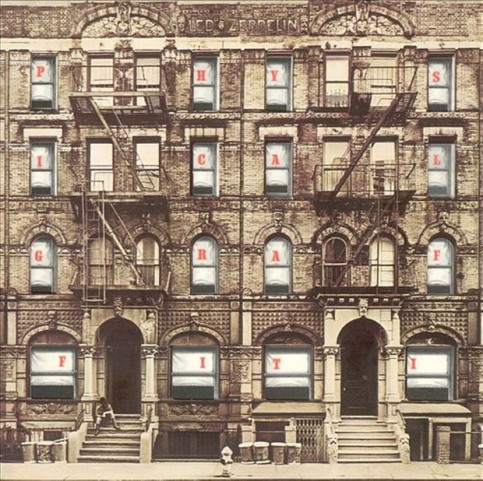
It is still a countercultural magnet, and as a resident myself, I can attest to the fact that “crusty punks” with pit bulls and the odd group of cannabis-smoking teenagers can at times still provide a bracingly antisocial air. The street has not been completely sanitised yet, despite the presence of Papaya King and Chase bank.
But is it still somewhere that nurtures creativity, as it seemed to be throughout much of the 20th century?
Calhoun is clear that it is.
“There’s this burlesque star named Dirty Martini who lives on the street,” Calhoun says, while at alternative performance venue Under St Marks, “I mean, talk about edgy, weird countercultural performances; they have those every weekend.”
She adds: “Mainly I think it’s still a place that people come to, and, you know, we don’t know what they’re doing. They are surely doing creative things. When everybody looked at the punks, they thought that was nothing. And when they looked at the hardcore kids, they thought that was nothing, and also scary. And when they looked at the hippies, they seemed like they weren’t going anywhere; they were just high, and weird.
“So I think people are very quick to dismiss the teenagers who are on St Marks Place now as nothing and I think: you don’t know yet.”
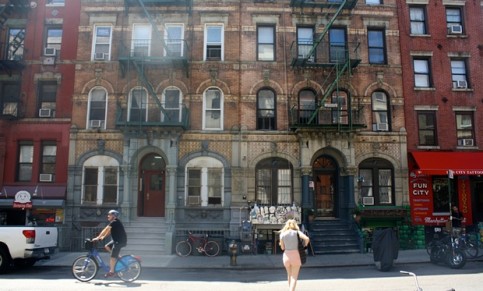
But if you were to make the opposing argument, it would involve gentrification. Calhoun points out that in 2014 a typical two-bedroom apartment could cost as much as $3,450 a month, a sum unlikely to be within the reach of future Debbie Harrys as they begin their careers. Not for nothing is this street also the home of Jimmy McMillan, founder of the campaigning political party The Rent is Too Damn High.
But Calhoun is sceptical. “A friend of mine … said, ‘Well, you know, rents are just going to keep going up for ever,’ and I thought, ‘That’s not really possible. That doesn’t happen,’” she says.
“In the history of St Marks Place you’ve never had a sustained period where rents just keep going up and up and up for more than, like what?, 40 years or something before something happened. Itstarted off richer probably compared to the rest of the city than it is now. In the 1830s [founding father] Alexander Hamilton’s widow lived here. Judges lived here. This was the place where the people who could live anywhere and had all the money chose to live . Now it’s getting really expensive, but I think it’s crazy to think that there won’t be a change at some point. It’s always changed.”.”
In her book, Calhoun is also careful to point out that there was a downside to the much-glamourised “Fear City” New York of the 1970s and 1980s, hymned again in Garth Risk Hallberg’s new novel City on Fire. Growing up on the street she and other children were “witness to an endless parade of murderers, pedophiles, and drug addicts”, she writes, “were groped in movie theaters” and “found used condoms and weapons in playground sandboxes”.
“When you were a child it sucked,” Calhoun recalls. “It was absolutely terrible. It was a really dangerous place. It was filthy. And there were always homeless people sleeping in the lobby. There was always a junkie nodding out on the corner. There were always drug dealers walking down the block, and they’d be hissing at you … I’m like 11; I’m not going to buy pot from you.”
She adds: “I was followed all the time … You always had to have your tricks, like you wouldn’t go straight to your apartment, you would like walk past it in case anyone was following you, or you’d go and hide out in a deli.
“I used to carry my keys between my fingers like this, you know,” she says, demonstrating, “in case I needed a weapon. Which I never did, but I just used to traditionally carry them like that … for years.”
In 1988 the Gap opened on St Marks, and many declared the counterculture dead, Calhoun says. “But I was 12, and we were just fascinated by it. We thought it was the most magical, mysterious place. We’d never seen those colours before and like, flower prints … We thought they were really great.”
Amid the murder and bloodshed of that era this wild, dangerous, vibrant New York produced punk, hip-hop and disco. But as Calhoun demonstrates, brotherly love, democracy and peace all have their advantages too, even if they produce nothing more impressive than a cuckoo clock, to paraphrase Orson Welles in The Third Man.
“The street today is safer and more pleasant than at any point in the last fifty years,” Calhoun writes, and when at the end of the book she asks three longtime residents to name St Marks Place’s golden age, they all reply: “Now.”

You must be logged in to post a comment Login